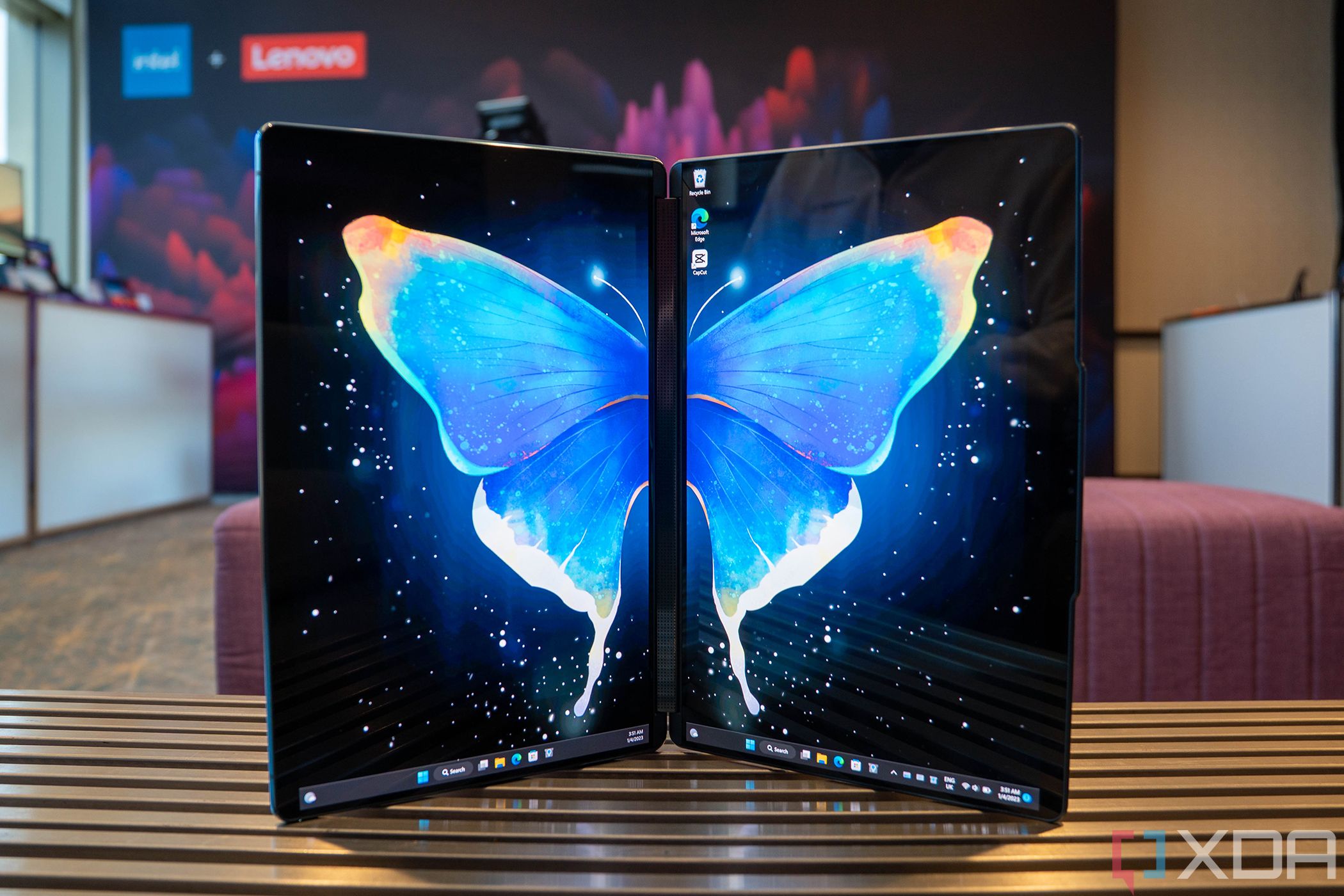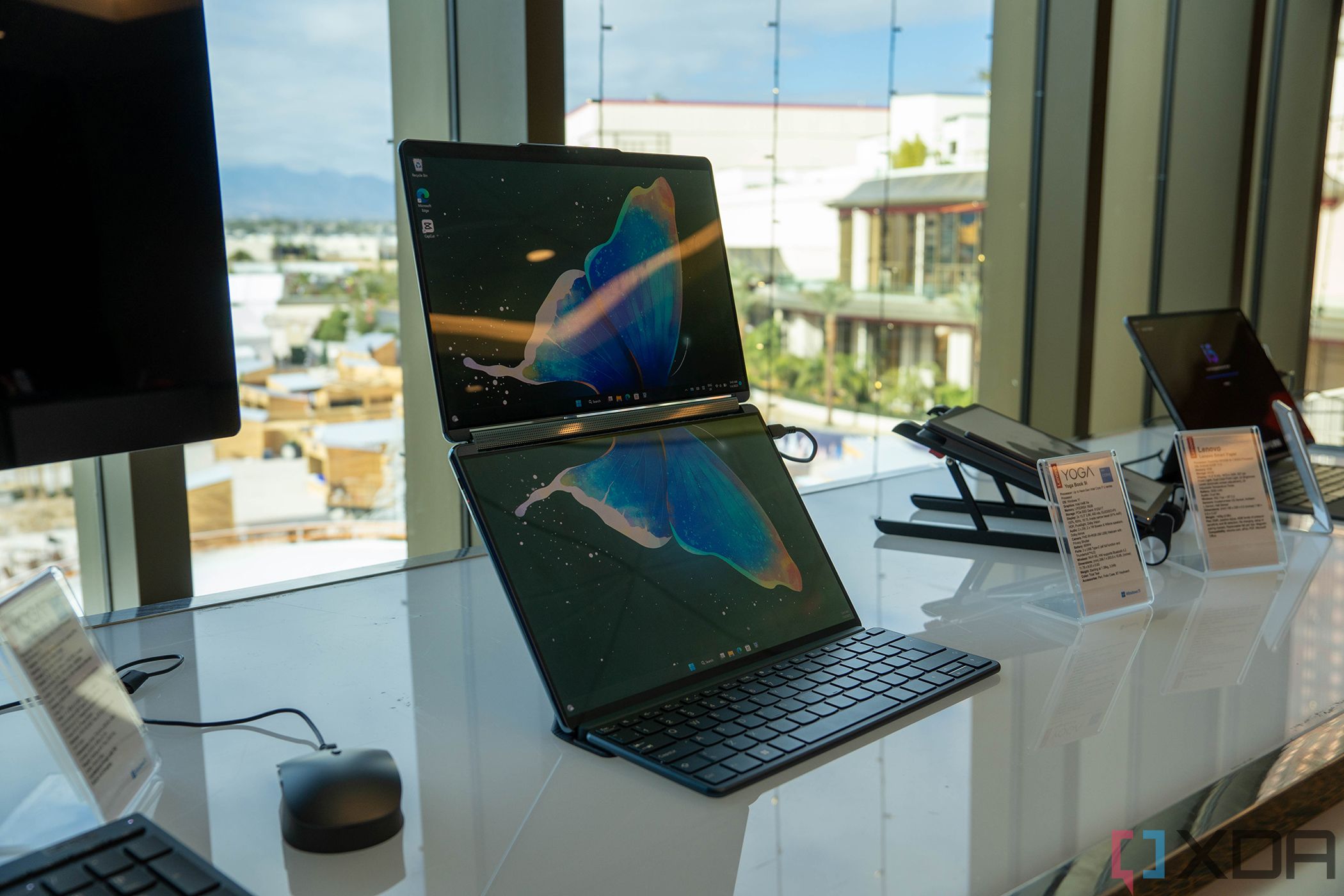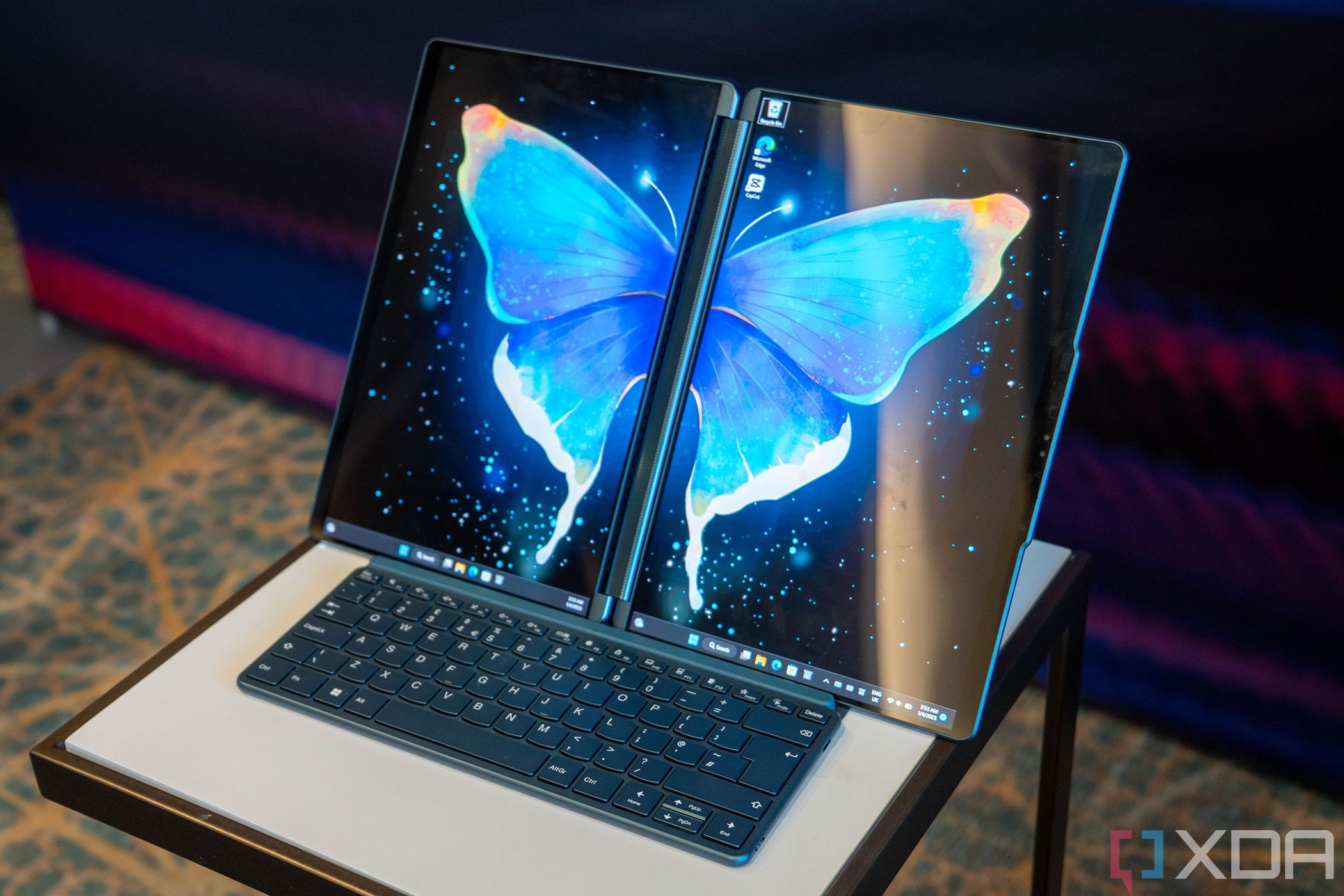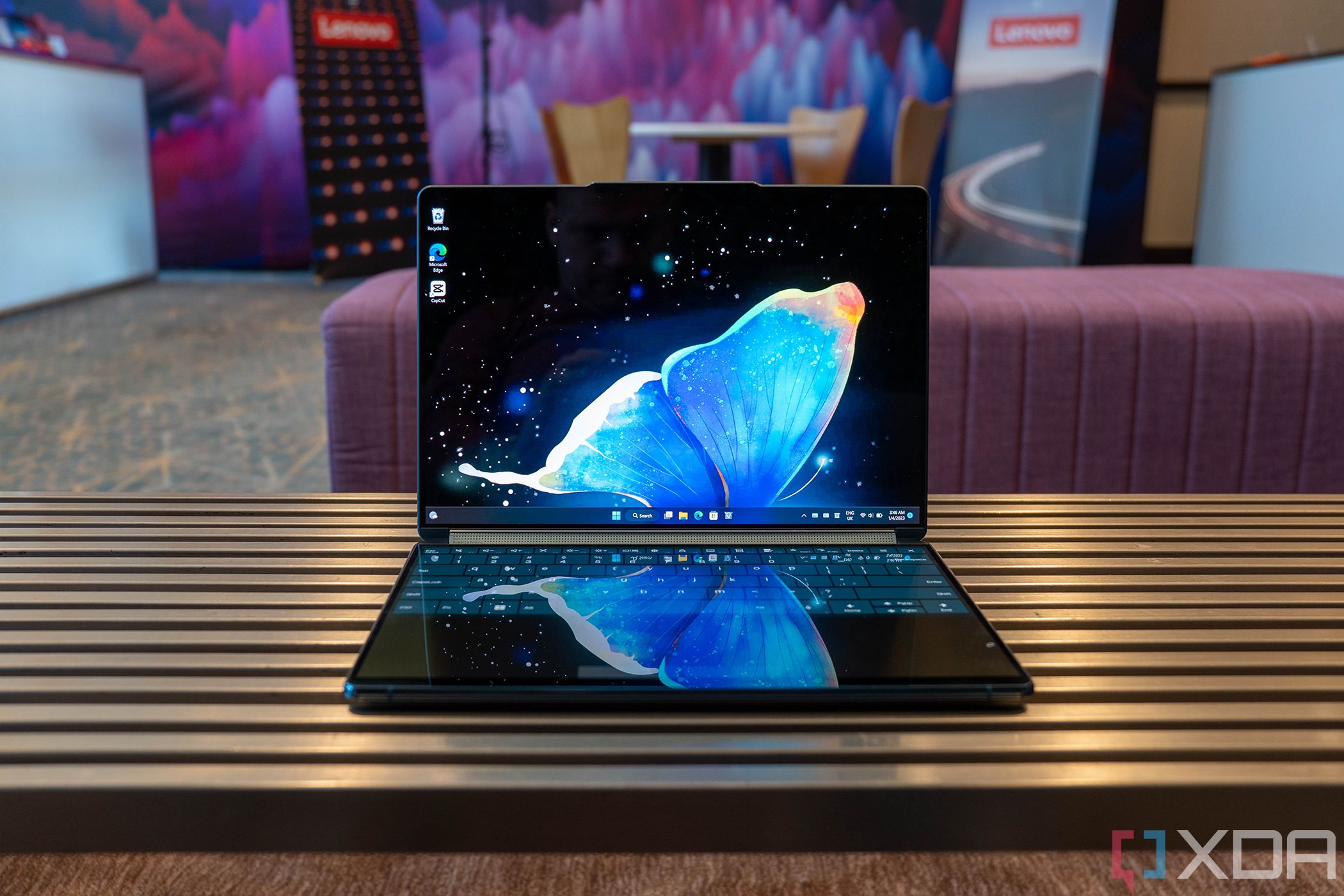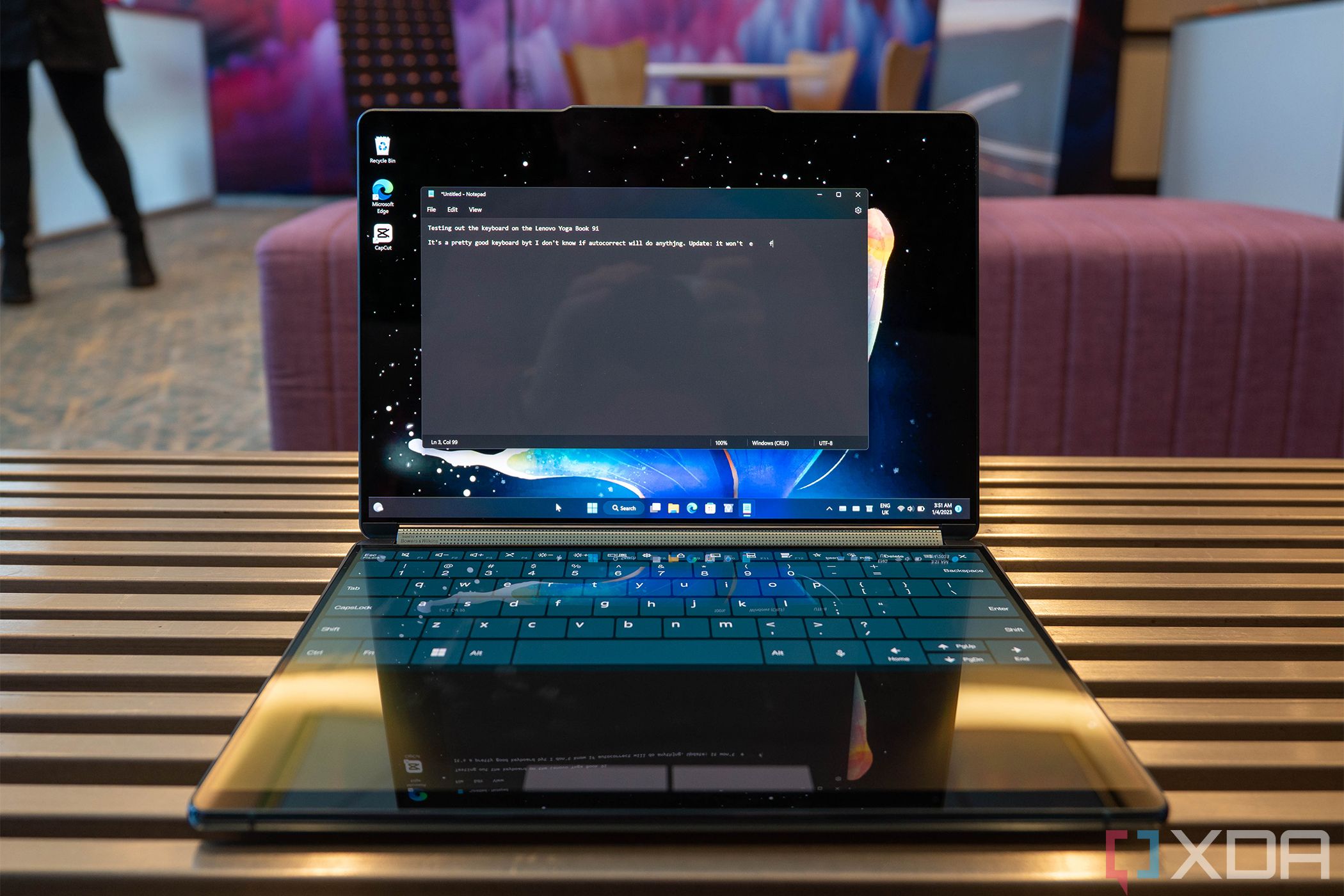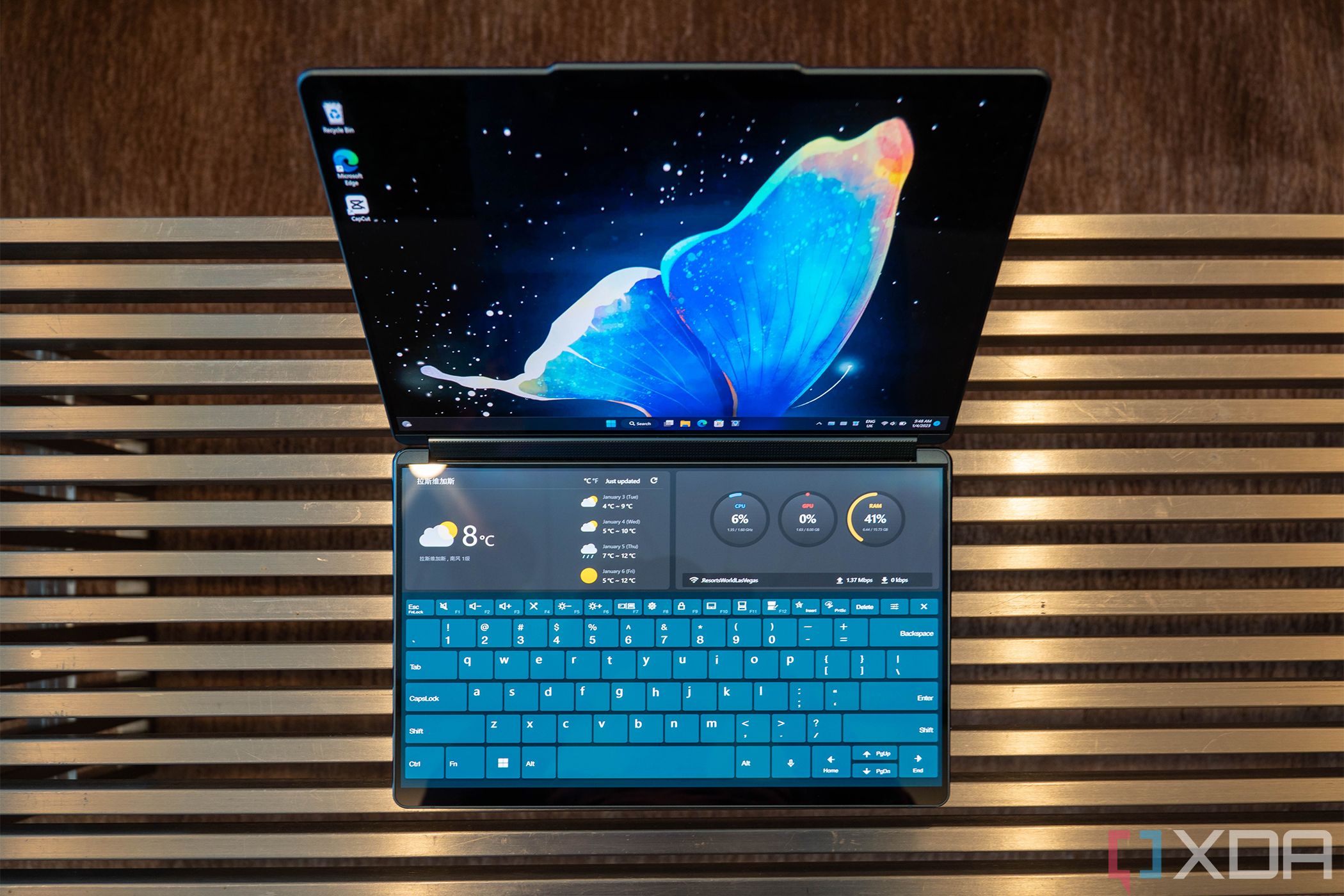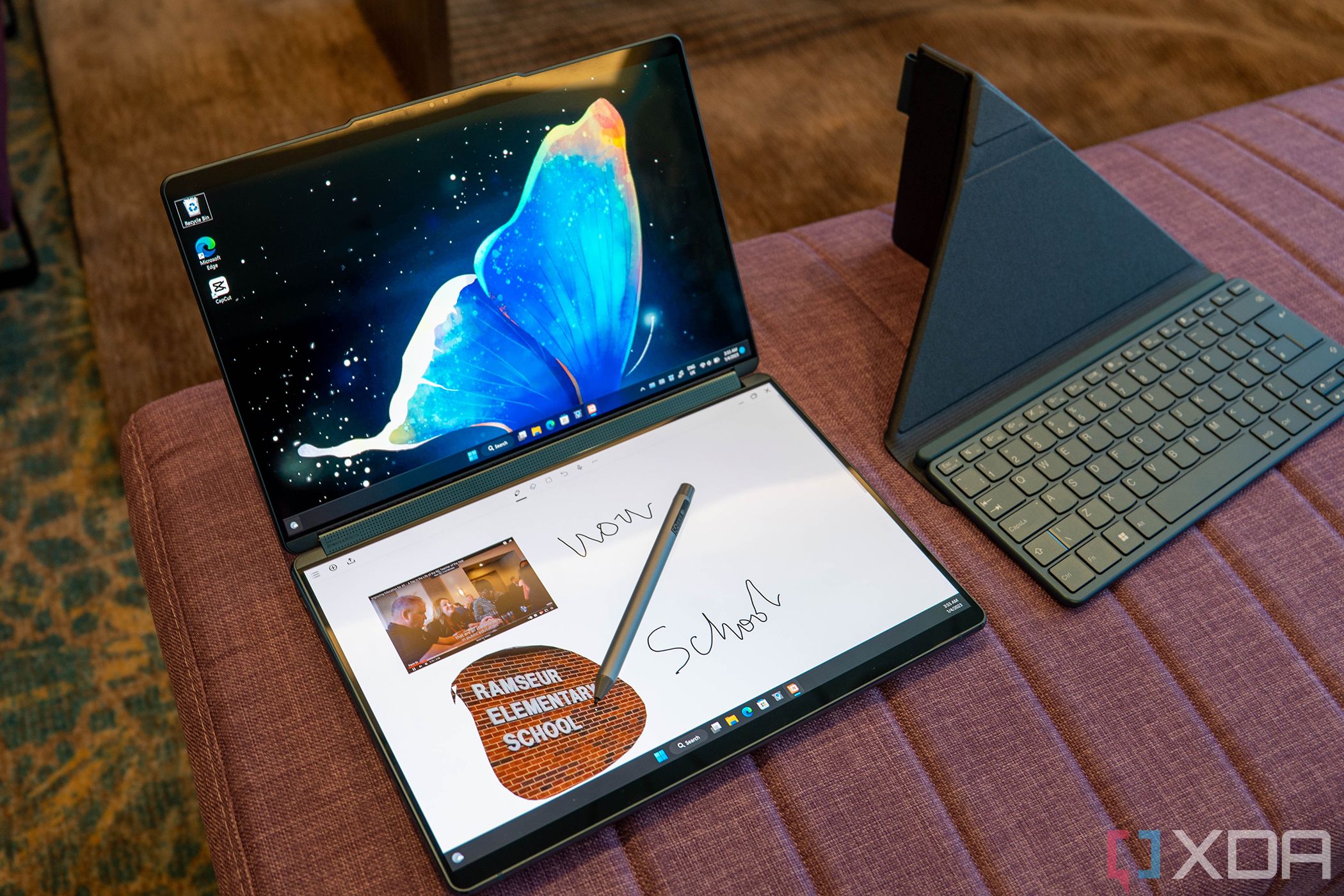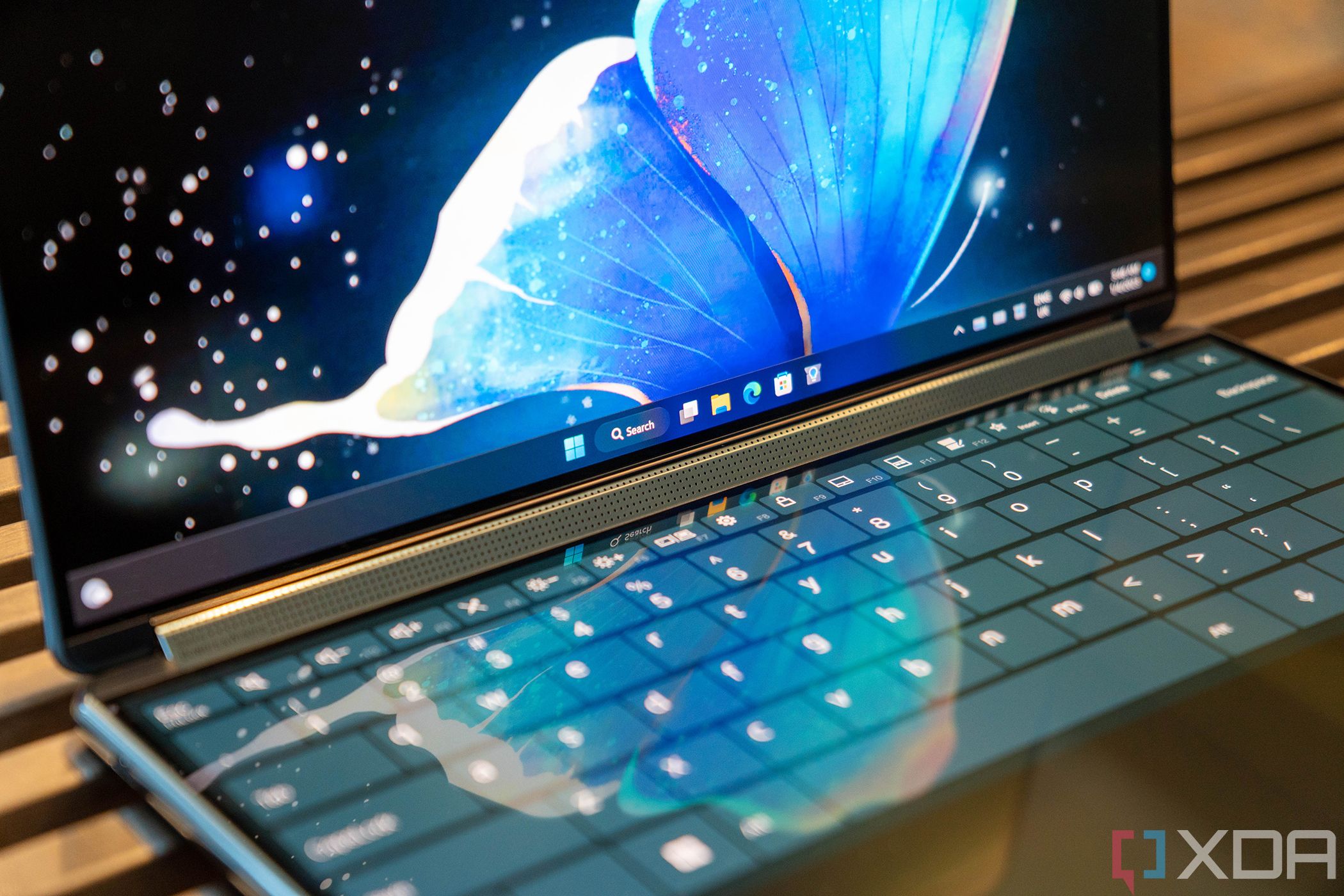Lenovo always shows off innovative new products at CES, and this year it had several. But perhaps most interesting is the Lenovo Yoga Book 9i, the first proper dual-screen laptop. Indeed, Microsoft announced the Surface Neo years ago, and while that product doesn't exist anymore, Lenovo is the one that's moving forward with the idea.
The firm has used the Yoga Book brand in the past, interestingly enough. The original Yoga Book was an Intel Atom-based laptop that had a glass keyboard. There was pen support and you were able to make the keyboard disappear to draw on it. The Yoga Book came in Windows and Android flavors.
Then there was the Yoga Book C930, which replaced that bottom keyboard panel with an E Ink panel. This added better haptics for the keys, and an animation to indicate that a key was being pressed. It also allowed Lenovo to play around with E Ink displays, something we've seen more of in its ThinkBook series.
The history of the Yoga Book brand is important, because now with this third iteration, we can see lessons that Lenovo has learned, such as with keyboard haptics.
But why would you want a dual-screen laptop?
Let's start with the big question, which is why you'd want this thing to begin with. The image above seems to be how Lenovo is mostly marketing this. You can have two 13.3-inch 2.8K OLED displays right on top of each other. They can act as any dual monitors would, with two taskbars and everything, or you can span one monitor across the two displays.
As you can see, there's an attachable keyboard, which works via Bluetooth. Basically, it's your own dual monitor setup on the go, and it's pretty neat.
Naturally, you can position the two screens however you want. If you want two screens in portrait orientation, which might be more practical, you can choose to do that.
Using the on-screen keyboard on the Lenovo Yoga 9i
You don't actually have to use the Bluetooth keyboard accessory. Indeed, it might not make for a very lappable product. You can choose to type on the screen if you want to, and Lenovo has made some improvements to help with that.
Using an eight-finger gesture, you can pull up the onscreen keyboard, which comes with a touchpad at the bottom. The touchpad spans across the device, which is kind of neat. It gives me Dell XPS 13 Plus vibes, since that product had a borderless touchpad, giving it the appearance of spanning across the palm rest. It didn't though.
Typing on it felt like I expected it to. There's haptic feedback and audio indicators when keys are pressed, so it's as comfortable as it can be. I should note that I've done a lot of typing on iPads on my lap in my life, so this was probably more comfortable for me than it should have been. Even the Lenovo representative that demoed the product for me remarked at how fast I could type on it. Still, all that means is that it might take a little getting used to, but once you're used to it, it's pretty good.
You can also use an eight-finger gesture to get rid of the touchpad, making room at the top for other things. As seen here, you can view the weather and system resources, but there are a ton of other widgets. You also have the option of adding your Outlook mail or calendar to it. It's pretty neat.
Lenovo says that it developed all of this stuff in-house, just in case you were hoping that Microsoft was optimizing Windows 11 for it, as it's rumored to be.
Unsurprisingly, it has pen support
I think that for a dual-screen laptop, you can probably expect to use it with a pen at some point. If you're not going to do that, the product might not be entirely practical.
One thing that's neat is that you can take notes on the bottom while doing something else on top. You could be taking a class, reading a textbook, or something else. If you're like me and you tend to take handwritten notes, this could definitely come in handy. Also, if a keyboard was there, then you'd be stuck with having the video/book on only half of the screen while your notetaking app is on the other side.
The Lenovo Yoga Book 9i is also just a really good laptop
If you don't notice the second screen, you could actually mistake the Yoga Book 9i for the Lenovo Yoga 9i, which happens to be our pick for the best laptop on the market. It has the same rounded edges, and they're glossy, a look that's reserved for Lenovo's flagships. It has three Thunderbolt ports, rather than the two on the Yoga 9i, and there's no USB Type-A port.
It does have the rotating soundbar though. This is a feature that has historically separated the Yoga 9i series from the rest of the market, focusing on seriously superior audio quality. It's interesting to see it here. When I heard about Lenovo doing a dual-screen laptop, I wasn't picturing what I actually ended up seeing. This feels very much like a laptop that has had its keyboard removed and replaced with a second screen.
The base is thicker than the lid, just like a regular laptop would be. That's because the base has the storage,. CPU, RAM, and so on. I assumed it would be more like the Microsoft Surface Duo is and the Surface Neo was supposed to be, with both sides being equal width.
Is the future foldable?
The Lenovo Yoga Book 9i isn't coming out until June, and it's going to start at $2,099, so it's not cheap. While Yoga is a consumer brand, the company has the ThinkPad X1 Fold Gen 2 coming out on the business end of things, and as the name implies, that product is actually foldable.
Most companies have decided that foldable is the way forward. While firms like Samsung, Honor, Oppo, Asus, and more are making devices with foldable displays, the only ones that have taken a dual-screen approach are Microsoft, and now Lenovo.
I think Lenovo likes to try a bit of everything. At CES, the company always has something interesting, and while these are real products, they often feel like concepts. Time will tell which ones get refreshed and which ones don't.
But I will say this. If there's a path forward for dual-screen laptops, it really feels like Lenovo hit the nail on the head with a great user experience. Both the hardware and the software are great, and I can't wait to test it out in June.

